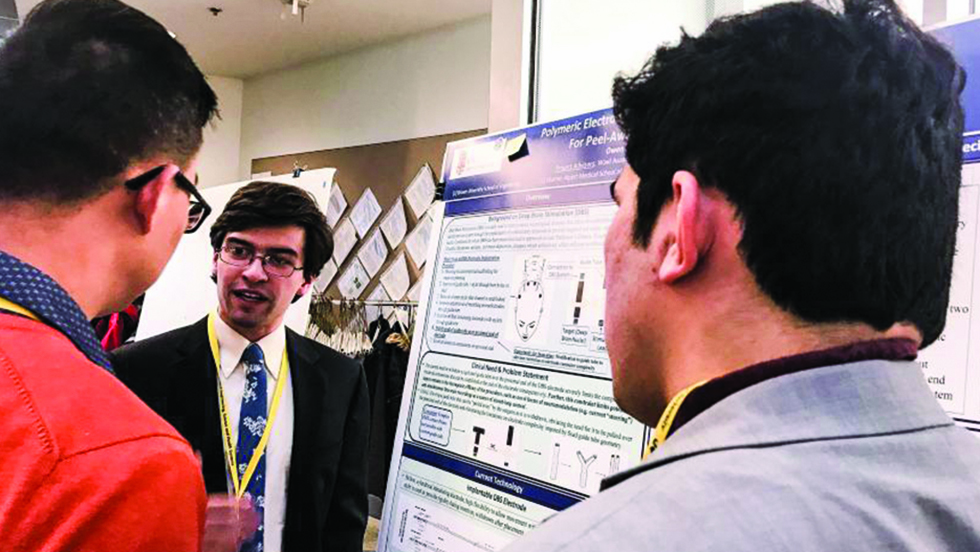 Brown Engineering's Owen Leary '18, Zakir Tahir '18, Rohan Rastogi '18 and Noah Trac '18 took first place in the Image and Signal Acquisition category at the recent Northeast Bioengineering Conference (NEBEC) with their project "Polymeric Electrode Placement Catheter Design with Steel Inserts for Peel-Away Removal in Deep Brain Stimulation." The conference was hosted by Drexel's School of Biomedical Engineering Science and Health Systems.
Brown Engineering's Owen Leary '18, Zakir Tahir '18, Rohan Rastogi '18 and Noah Trac '18 took first place in the Image and Signal Acquisition category at the recent Northeast Bioengineering Conference (NEBEC) with their project "Polymeric Electrode Placement Catheter Design with Steel Inserts for Peel-Away Removal in Deep Brain Stimulation." The conference was hosted by Drexel's School of Biomedical Engineering Science and Health Systems.
The peel-away catheter design took root in the fall semester's Biomedical Engineering Capstone design course, which was led by Engineering Professor Anubhav Tripathi and Lecturer Celinda Kofron. The standard steel guide tube currently used in deep brain simulation electrode implantation procedures must be withdrawn over the proximal end of the deep brain simulation electrode. This severely limits the complexity of the electrical connections that can be established at the proximal end of the electrode intraoperatively, limiting potential improvements to the therapeutic efficacy of the procedure. The group's goal was to develop a guide tube that can be "peeled away" by the surgeon as it is withdrawn, obviating the need for it to be pulled over the proximal end of the electrode, and thereby eliminating the limitations on electrode complexity imposed by fixed guide tube geometry.
The clinical need for their design was guided by Dr. Wael Asaad, Director, Functional Neurosurgery & Epilepsy Program and Co-Director, Deep Brain Stimulation at Rhode Island Hospital. He is an Assistant Professor of Neurosurgery and Assistant Professor of Neuroscience, in the Warren Alpert Medical School of Brown University. The team was mentored by Shane Lee, Ph.D.
At the conference Leary and Tahir presented progress on their device and illustrated the numerous benefits that their catheter design could provide to neurosurgery.